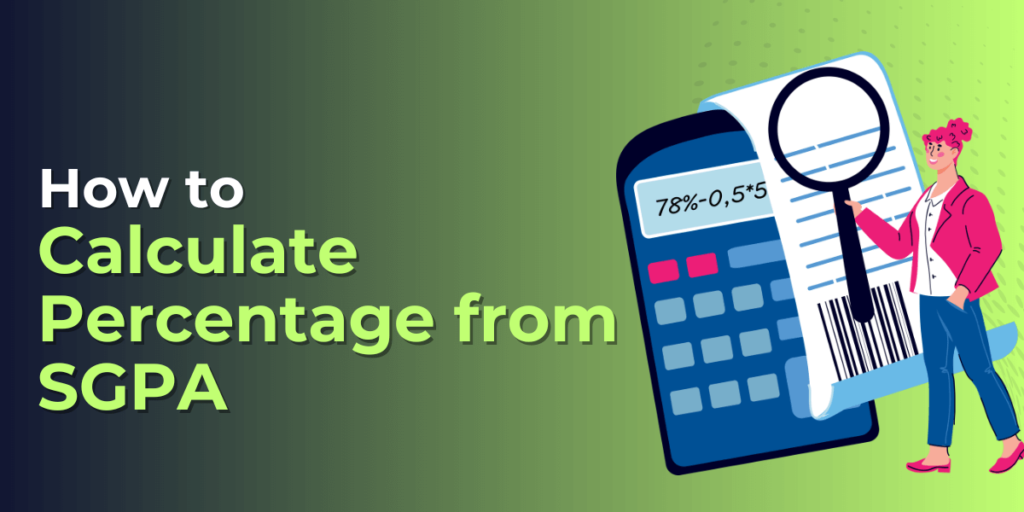how to calculate percentage from SGPA In the field of academia, grading systems are frequently used to evaluate a student’s performance. The Semester Grade Point Average (SGPA), which is a gauge of a student’s academic achievement in a specific semester, is one such system. The SGPA gives a general idea of a student’s performance, but it is frequently necessary to transform it into a percentage for different objectives, such as scholarship applications, job interviews, or chances for further study. In this post, we’ll look at.
Let’s first grasp the underlying principles before delving into the computation method. A weighted average of the Grade Points (GP) earned in each course studied over the course of a semester makes up the SGPA Calculator. The grade point average (GP) is a number that is associated with a grade, typically on a scale of 0 to 10 or 0 to 4, depending on the institution’s grading policy. Higher GP values are typically allocated to higher grades, signifying better achievement. The credit hours related to each subject are also taken into consideration when calculating the SGPA. The number of credits reflects how significant a course is to the entire program.
Determine the Maximum SGPA Scale
The maximum SGPA ranges at different colleges may vary. For instance, whereas some colleges use a 10-point scale, others can utilize a 4-point scale. Knowing the maximum SGPA scale is essential for appropriate conversion.
Compile the necessary data
You require the following details to determine the percentage from an SGPA:
Maximum scale for SGPA
grade point average for the semester
total number of credits for the term
Determine the total credit hours
Total the credits earned across all semester-long courses. The weighted average of the courses is represented by this number.
Calculate the Weighted Credit Points
Add the GP earned in each course to the credit hours for that course. The weighted credit points for each course are determined by this calculation.
Calculate the total weighted credit points
The total weighted credit points for the semester are calculated by adding the weighted credit points earned in each course.
Calculate the SGPA percentage
The formula below should be used to determine the SGPA percentage:
SGPA Percentage is calculated as (SGPA/Maximum SGPA) * 100.
Calculate the percentage
Use the formula below to determine the overall percentage:
Total Weighted Credit Points / Total Credit Hours * 100 = Percentage
Let’s now go to the detailed procedure for determining the how to calculate percentage from SGPA:
It’s crucial to remember that the final % determined in corresponds to the final percentage earned for that specific semester. You must take into account the total credit hours and total weighted credit points collected over the course of your academic career if you want to compute the cumulative percentage for multiple semesters.
You can simply change an SGPA into a percentage by following these instructions. It is important to note that various schools may use somewhat different techniques or adjustments when calculating results. To ensure appropriate conversion, it is therefore advised to check the policies or academic requirements of your institution.
You can have a standard measurement that is commonly used and recognized by converting an SGPA into a percentage. It offers a thorough depiction of your academic performance and might be helpful for upcoming activities like looking for work, going to college, or applying for scholarships.
Conclusion
In order to calculate a percentage from an SGPA, you must take into account the maximum SGPA scale, the total number of credits, the SGPA attained, and the weighted credit points. You may precisely convert an SGPA into a percentage by using the step-by-step procedure described in this article, giving you a clearer picture of your academic success.





